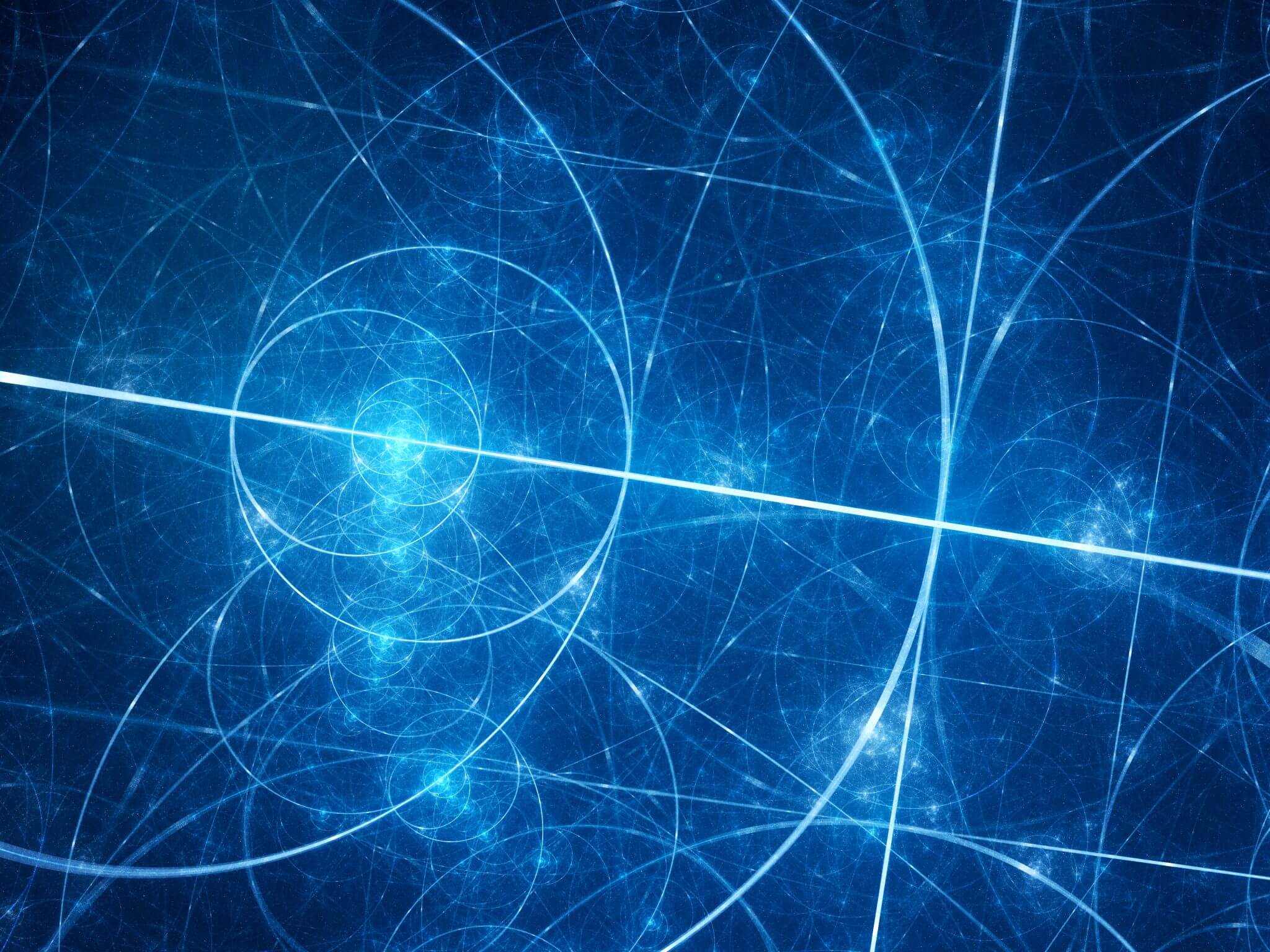
Simplicity is the ultimate sophistication
Let’s begin:
Do you know what there is in common between Einstein, Newton, Nikola Tesla, Maxwell, Leonardo DaVinci, Michelangelo, Erwin Schrödinger, Leonhard Euler, Rodger Penrose and many other great minds?
You may say that all of them are one of a kind and they changed the world we live in. That is true.
You may say that their love of humanity and nature led them to the great discoveries they made.
That is also true.
But what you might not know is that these great people and many others were absolutely fascinated by a simple sequence of numbers: 1,1,2,3,5,8,13,21,34,55…
This sequence is known as The Fibonacci sequence.
Fibonacci:
Leonardo Bonacci is an Italian mathematician born in 1170. The last name Fibonacci came later and originated from “filius Bonacci” which means “son of Bonacci”.
As many mathematicians do when they try to prove or discover something, he started with an assumption. He imagined that he had two rabbits, a boy, and a girl. The first assumption he made was that rabbits could mate when they reach one month, the pregnancy would also be one month and the female rabbit would have two babies, again a girl and a boy. The last assumption he made was that rabbits never die.
At first, there is one pair of rabbits. The first month there would still be one pair. The second month there would be two pairs. The third month there would be three pairs (also, the female rabbit from pair number 2 would be pregnant). The fourth month there would be five pairs. The fifth month there would be eight pairs, the moth after – thirteen and so on: 1,1,2,3,5,8,13,21 … We see that every next number is the sum of the previous two, a quite simple sequence.
Let’s see how deep the rabbit hole is.
Fibonacci spiral and the golden ratio:
What is so special about these numbers?

If we draw squares with sides equal to the Fibonacci numbers, arrange them next to each other so we leave no gaps, and draw a curve going through these squares, we will create the Fibonacci spiral. If we calculate the ratio between a number in the sequence and the previous number like 5/3, 8/5, 13/8, 21/13 … we will get a number approximately equal to 1.618. This number is called “phi” and is known as “Golden ratio”, ”Divine proportion” or “Nature’s secret code”. No matter the name, it has absolutely fascinated the greatest minds in the world for centuries.
Why?
Because the spiral and the Golden ratio apply to different proportions, features and processes in our body and mind and some say there are a few billion matches. Same apply in the nature, same apply in the space, same apply in the sound and light, same apply in an endless list of aspects and we keep finding new matches.
Fibonacci in the human body:
The list is quite long so I will mention only a few of them.


The Fibonacci numbers are everywhere in our body: one head, two arms and legs, three major bones in the arms and legs, five fingers and so on. Our upper part of the arms and the legs is in “Golden ratio” proportion with the lower part, the same applies for how phalangeal bones relate to each other. The Spiral is everywhere, our face, ears. The most appealing faces follow the spiral and the golden ratio in the distance relations between the eyes, ears, mouth, and nose. That does not only mean “the most handsome” faces, but more like the faces that naturally look trustworthy. Many examples of the golden ratio are noticed in our teeth too.

The same applies to the world “under our skin”. Diastolic time interval and systolic time interval in our heart match the golden rate. Many matches are noticed in almost all organs we have. On molecular level the nucleotide spirals of our DNA match Fibonacci proportions. The DNA molecule measures 34 angstroms long and 21 angstroms wide for each full cycle of its double helix spiral model… so the ratio is very close to 1.618.
The first time Penrose met Hameroff he was obsessed with how the arrangement of microtubules tribes matches the golden ratio and the spiral.
The golden ratio is observed even when we walk:
“The repetitive gait phases of physiological walking were found in turn in repetitive proportions with each other, revealing an intrinsic harmonic structure. Harmony could be the key for facilitating the control of repetitive walking.”
Seems like the geometry of our body, our organs, the frequencies in our brain and body, even the sound vibration in our cells, our emotions, even our walk phase are related to the Fibonacci spiral and the ratio. Some say that when we are healthy and in peace, we are fine tunned with this ratio.

Leonardo DaVinci was also fascinated by the Fibonacci sequence. His masterpiece “Vitruvian man” was inspired by the harmony and the sense in it. His painting and the fact that he put the human in a circle – “release him” from the box, reveal his attitude and the meaning he found in the Fibonacci sequence. We still find secrets in this painting after all these years.
He “encoded” his ideas in other paintings of his, such as Mona Liza, as well as in his inventions. In general, the “art world” is full of Fibonacci pattern examples. Maybe because the golden ratio inspired all these artists or maybe because the beauty and harmony are in the Fibonacci sequence itself.
By the way, now it is considered that the “Homograph geometry” can describe the Universe a way better than the “Euclidean geometry”, the one we know from school. In this geometry, everything is in a circle. We could even dare assume that our future could be our journey to our own past.
Fibonacci in nature:
The Fibonacci spiral and the golden ratio are everywhere, from seashell to sunflower, from ocean waves to sound and light waves, from animals’ features and behavior to tree growth.
Let’s see some examples:

A lot of plants match the Fibonacci spiral. The most common example is the sunflower, it perfectly matches the Fibonacci spiral. When a tree grows, at first it has one branch, then two, then three, then five, then eight and so on.

There are thousands of examples of flowers matching the spiral and the golden ratio, I will leave it to you to explore this beauty by yourselves.
Eggs match the Fibonacci spiral, the same with the growing embryo, the same with ram horns and most of the see world.



Honeybees population grows following the golden ratio, the construction of their honeycomb follows the Fibonacci spiral, the ratio between female and male bees matches the golden ratio. The male bee family tree starting from parent to grandparents follows the sequence:1,2,3,5,8. The female bee family tree follows thesequence:2,3,5,8,13.
We can see this pattern in almost every living being on Earth, the spiral and the golden ratio will emerge all the time if we search for beauty and harmony.
Some people think that this is the “nature’s secret code” and everything in nature is forced to pursuit harmony with itself and everything around it. Searching for the reason nature seems to follow the Fibonacci pattern can help us understand who we really are. No matter what we discover and when, one thing seems to be clear already: we and nature are all parts of the same system. Some say that the time-space frequencies we live in define these laws and they define us, but no matter what it is, it seems that we share a common journey more than we realize.
Fibonacci in the Universe:

Milky Way Galaxy, Andromeda and M81 match the Fibonacci spiral.
Starting from Mercury, the average mean of the orbit distance between each planet in our solar system and the planet before it, approximates the golden ratio.
The Fibonacci spiral is also observed in cloud formation and hurricanes.
Researchers say that the golden ratio is also seen in the topology of space-time, affecting the entire universe.
“The time has come to recognize that relativity and quantum theories can be integrated, and linked numerically to the value of a mathematical constant – whether in the context of space-time or biology” … the mathematical constant they refer to is the “phi” (the golden ratio)
Recent research shows that our solar system follows the Fibonacci order, which finally defines it as a “complete system”.

The time, gravity and light singularity is a quite interesting subject (also quite difficult to follow). Still, when we explore it, we can say that:
“…the “way” space would affect time and thus light is calculated to be in the manner of a golden ratio algorithm as that wave-function, or in other words, in a Fibonacci sequence “spiral” manner.”
Some say that the universe is light and sound.
Let’s see what the sound is.
Fibonacci in the music:
Next time I might write a separate blog post about how important sound is for our harmony and existence, but for now let me say that hypotheses that light and sound are everything are not so far from the truth, at least for me.
Have you ever noticed how some pieces of music just seem to make sense? From the notes and chords to the phrasing and dynamics, they can all feel like they were meant to go together. Many people believe this is not a coincidence but the golden ratio in action.
Let’s see some facts:
An octave on the piano consists of 13 notes. Eight are white keys and five are black keys.
A scale is composed of eight notes, of which the third and fifth notes create the foundation of a basic chord.
On a scale, the dominant note is the fifth note, which is also the eighth note of all 13 notes that make up the octave.
“Mozart arranged his piano sonatas so that the number of bars in the development and recapitulation (where the theme is developed and repeated) divided by the number of bars in the exposition (where the musical theme is introduced) would equal approximately 1.618, the Golden Ratio.”
“Experts claim that Beethoven, Bartók, Debussy, Schubert, Bach and also used this technique to write their sonatas, but no one is exactly sure why it works so well.”
“The Golden Ratio can be found throughout the Stradivarius violin by dividing lengths of specific parts of the violin. Some people think this is one of the reasons it sounds so good.”
We can go on with the examples for quite a long, even the “G clef” … this is the sign at the beginning of the fifth lines where the notes are drawn (called staff) … even the G clef is a Fibonacci spiral.

I will stop with the examples and will glance at the surface for the importance of the sound itself, as I said this subject deserves at least an entire separate blog post.
Everything vibrates with some frequency, all matter has its unique sound, every human has their unique sound vibration. Even our DNA has its own melody, literally. The latest research shows that our cells communicate to each other via sound waves. Our cells!
I will stop here, I just wanted to leave you with a basic impression of what light and sound might really mean to who we really are.
Conclusion:
Usually, I share my thoughts as a conclusion but this time I will leave that to you.
In the end I will only mention something you might not know although it’s been known for a while.
Humans produce a significant amount of energy via their thoughts.
This energy is measurable in power (Watts) and frequency (Hz).
Positive thoughts are way more powerful measured in Watts than negative ones.
Different thoughts have different power and frequency.
The thought of “love” is the most powerful one, way more powerful than any other thought.
Its exact frequency is 528Hz.
Do you find the numbers 5,2 and 8 any familiar?
P.S.
The “Mi” tone is with frequency 528Hz. Some say Mi origins from Miracle. I do not know if this is true, but I do know it could be.


